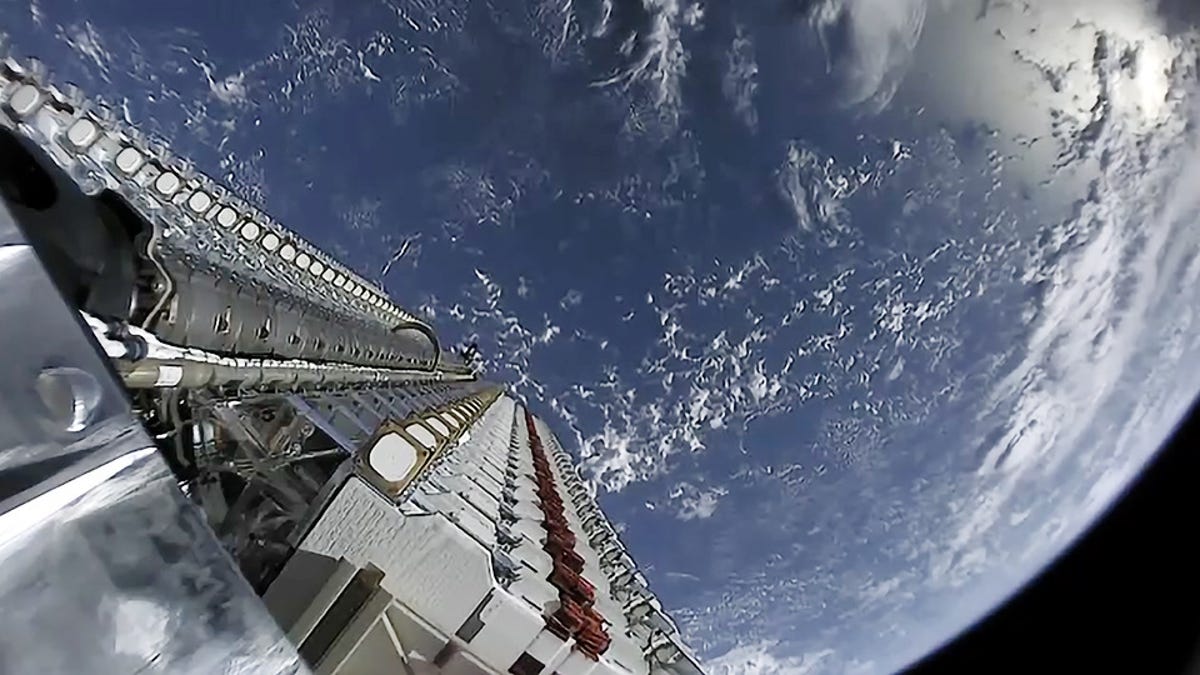SpaceX Starlink satellites doomed after geomagnetic storm hits Earth
As many as 40 satellites from a recent launch will disintegrate as they reenter Earth's atmosphere.

Starlink satellites being delivered to orbit aboard a SpaceX Falcon 9
As many as 40 Starlink satellites from Thursday's SpaceX launch are set to smash back into Earth's atmosphere and disintegrate in the atmosphere, according to a SpaceX update on Tuesday.
Last week, SpaceX sent 49 Starlink satellites up on a Falcon 9 from Kennedy Space Center in what is becoming a rather routine operation for Elon Musk's spaceflight company. SpaceX has launched over 2,000 Starlink satellites since 2018 in an attempt to bring high-speed satellite internet to all corners of the globe -- and particularly those where access has typically been limited.
But after launch on Thursday, a geomagnetic storm slammed into Earth's atmosphere. Geomagnetic storms are caused by the sun spewing out solar wind particles that eventually crash into Earth. The particles mess with the planet's magnetic field and disrupt satellites, increasing drag and messing with their orbits.
That's exactly what happened to potentially 40 Starlink satellites just after they were deployed into their intended orbit, SpaceX has said.
When the geomagnetic storm hit Earth last week, it increased atmospheric drag on the batch of satellites. SpaceX quickly chucked the satellites into safe mode and flew them "edge-on" to minimize the drag and, it says, to "take cover from the storm," but its preliminary analysis shows the satellites never came out of safe made and can't raise their orbit.
SpaceX said the satellites will "reenter or already have reentered the Earth's atmosphere" on Tuesday, effectively ending their short lives. When the satellites collide with the atmosphere, they're designed to burn up entirely, so no debris reaches the ground. SpaceX also says they pose no risk to other satellites.
Astronomers hold concerns about the ever-increasing number of Starlink satellites headed to orbit. In January, astronomers working at the Zwicky Transient Facility published a study showing Starlink satellites have caused streaks in telescope images and the problem is increasing. On Feb. 2, the International Astronomical Union announced the formation of a new body -- the Centre for the Protection of the Dark and Quiet Sky -- to mitigate the negative impacts of satellite constellations.

